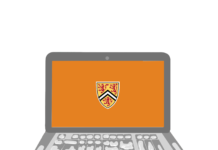On my first read-through of the final report of the PAC-SMH, I am many things, from cautiously optimistic to quite angry. I was a member of the Student Experience Panel, one of five panels initially convened at the end of July 2017, each with twenty members. I’d like to offer some of my initial thoughts and critiques, including critiques of my own offerings to the report and project.
I’ll start with points of cautious optimism. Many of the recommendations surround providing of training for faculty and staff to be able to better identify and respond to mental health crises and teach in ways conducive to mental wellness. One recommendation asks for methods of recourse for students whose requested accommodations are not fulfilled by instructors, something which happens all too often. Students with severe and chronic illness (i.e. disabled students, referred to in the report as students with “complex needs”) might have case managers in the future, and be able to be a part of transition programming for incoming disabled students. These and other recommendations have the potential to genuinely improve the lives of students, especially disabled students, including mentally ill and neuroatypical students.
Unfortunately, the above points are about all the acknowledgement (however indirect) disabled students get. In two separate recommendations, other marginalized groups have needs of public health campaigns, health care staff training, and support systems acknowledged (one of these recommendations is only in the Student Experience Panel report). Specifically, some of the needs of people who have experienced sexual violence, racial discrimination, transphobia, and addiction are acknowledged. I’m so glad they were (and I have some specific hopes for these recommendations that I’ll share below), but we/I also failed to include disabled students as a specific group here. That’s on everyone who participated in the creation of the report, but I’d like to take some personal responsibility, as I specifically advocated for the inclusion of the recommendations addressing marginalized groups.
To move forward from this significant oversight, there are a number of modifications or stipulations I’d like to see added to the report or at least formally acknowledged. One, that disabled students be included in the list of marginalized students for whom public health campaigns and specific staff training would be useful. Two, that mental health trainings for faculty and staff specifically include information relevant to students with chronic, severe, and less socially palatable illnesses (e.g. schizophrenia) and neuroatypical students (e.g. autistic and ADHD students). For instance, many disabled people stim (self-stimulate, like with rocking, shaking, humming, hand-flapping) as a part of everyday life. Some people regularly avoid eye contact, even or especially when discussing serious matters. Some people are periodically unable to talk, talk to themselves, or sound unfocused/distant when talking. Normalizing different modes of interacting with the world should be a part of trainings. Additionally, the complicated role that police and hospitals play in the lives of disabled people is relevant. In Canada, since 2007, at least five mentally ill people have been killed by police officers when they were in distress (source). Additionally, if a police officer deems someone to be a danger to themselves, they can show up with bulletproof vests and guns, often with little to no training in responding to mentally ill and neuroatypical people, and forcefully bring them to the hospital, where they can be held without their consent (more information on forms). If we wish to fully respect the bodily autonomy of disabled students, we may need to adjust policies on involvement of the police. Third, that disabled students, including those with physical and sensory disabilities, be afforded the tools to advocate for themselves and create their own community within the university.
With respect to being able to address the needs of marginalized students on campus, I have a number of thoughts. The content of public awareness-raising campaigns must be able to provide tools to students to be able to better deal with and understand their position. For instance, it would be helpful to provide information about what students who have experienced sexual violence are likely to experience in the near and long term. Students who have experienced racial violence (including micro-aggressions) may benefit from having an analytic framework with which to understand the history and current social construction of racism. Additionally, a recommendation only published in the report of the Student Experience Panel suggests that services such as support groups for people of specific marginalized identity or experience be developed, potentially under one or a few student services. The creation of regular, reliable community between students cannot be accomplished only with structure like support groups, but connecting individuals who are often isolated on a regular basis can go a long way. Ensuring accessibility in all of these support groups is important. Groups can be specifically designed to reduce barriers for anxious and autistic students, for instance with structured interactions. Tactics for improving accessibility, like sharing ample information about events well in advance, would benefit all events on campus.
Finally, in such a complicated process on such a disconnected campus, how do we develop accountability and student involvement and ownership of campus improvements? What do transparent and accountable methods of communication and co-creation of community look like? There are lots of answers to this, but there are two things on my mind right now: student history and processes which are slow but communicative.
In the administration’s report, whose stories are told? What perspective are we given? The primary narrative is about the actions of the administration, and features strong involvement from students at one point: the petition and vigil organized in March of last year. We find little history of other actions that students have taken to address barriers to care or to analyse cultural problems on campus. In fact, there have been many, from individuals on social media to discussions and support groups organized by student groups largely unsupported by the administration. Notably, The Mental Health Project and their Portrait of a Campus project (which I was involved with) identified many of the cultural problems acknowledged in the PAC-SMH report, and more. There is power in being able to present some histories and to not acknowledge others. Do Waterloo students have the power to shape their own communities when the administration selectively shares information about its own student body, about the history of its initiatives?
Understandably, the creation of this report was deemed to be an urgent matter. Quick production of results was demanded. There were several consequences to this. One was that any original study produced by the panels of the PAC-SMH did not have enough time to go through ethics approval. Another was that wide and deep studies of specific populations or services were impossible. It seems as though the committee sacrificed a great deal to be able to produce a professional-looking response to community outrage. How does a project like this proceed? With extremely official releases of information every several months? With the inability to fluidly update analysis as more information and thought goes into our efforts? The administration’s reliance on professional, branded appearances removes our ability to interact—instead, we find ourselves reacting, and only to highly polished releases of information. The ability to interact depends on information and power. Students can interact more readily with the operation and design of the services and campus which are supposed to support them when they have enough information to, and when their efforts mean something. Can we not provide frequent and thorough updates to each other about our efforts? Can we offer opportunities to shape some of the myriad questions and framings that administration deal with regularly?
With careful, ample communication, and centering of students, especially disabled and other marginalized students, it’s possible that the current chapter of UW history (from both students and administration) can create substantial change.
Emma McKay
MMath Candidate, Applied Math





























